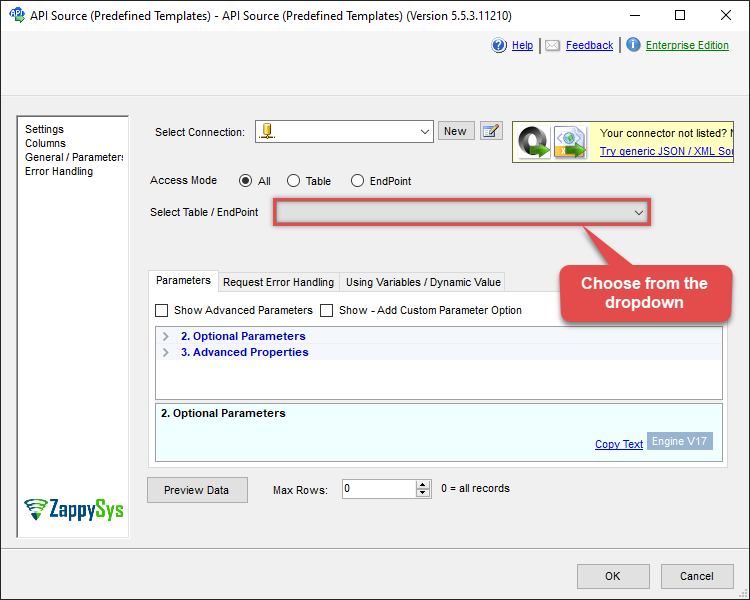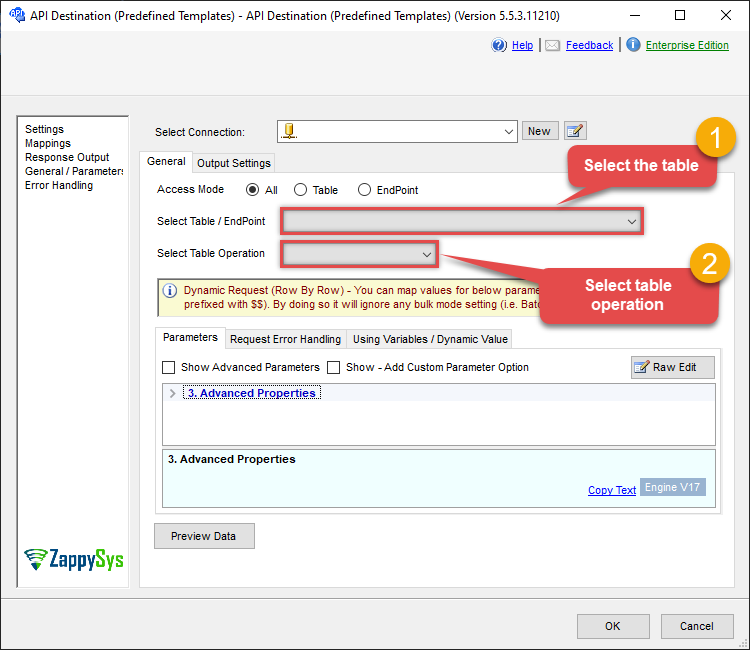Endpoint Delete Request
Name
delete_request
Description
Related Tables
Parameters
| Parameter | Required | Options |
|---|---|---|
|
Name:
Label: RequestId |
YES |
Output Columns
| Label | Data Type (SSIS) | Data Type (SQL) | Length | Description |
|---|---|---|---|---|
| status_code |
DT_I4
|
int
|
||
| status |
DT_WSTR
|
nvarchar(180)
|
180 |
Input Columns
| Label | Data Type (SSIS) | Data Type (SQL) | Length | Description |
|---|---|---|---|---|
| id |
DT_WSTR
|
nvarchar(4000)
|
4000 |
Examples
SSIS
Use ManagedEngine ServiceDesk Plus (Zoho) Connector in API Source or in API Destination SSIS Data Flow components to read or write data.
API Source
| Required Parameters | |
|---|---|
| RequestId | Fill-in the parameter... |
| Optional Parameters | |
| MetaDetectionOrder | Default |
| ContineOn404Error | True |

API Destination
This Endpoint belongs to the Requests table, therefore it is better to use it, instead of accessing the endpoint directly. Use this table and table-operation pair to delete request:
| Required Parameters | |
|---|---|
| RequestId | Fill-in the parameter... |
| Optional Parameters | |
| MetaDetectionOrder | Default |
| ContineOn404Error | True |

ODBC application
Use these SQL queries in your ODBC application data source:
Delete request
This example shows how to delete a request by ID.
DELETE FROM Requests Where id=111112345
delete_request endpoint belongs to
Requests
table(s), and can therefore be used via those table(s).
SQL Server
Use these SQL queries in SQL Server after you create a data source in Data Gateway:
Delete request
This example shows how to delete a request by ID.
DECLARE @MyQuery NVARCHAR(MAX) = 'DELETE FROM Requests Where id=111112345';
EXEC (@MyQuery) AT [LS_TO_MANAGEDENGINE_SERVICEDESK_PLUS_ZOHO_IN_GATEWAY];
delete_request endpoint belongs to
Requests
table(s), and can therefore be used via those table(s).
